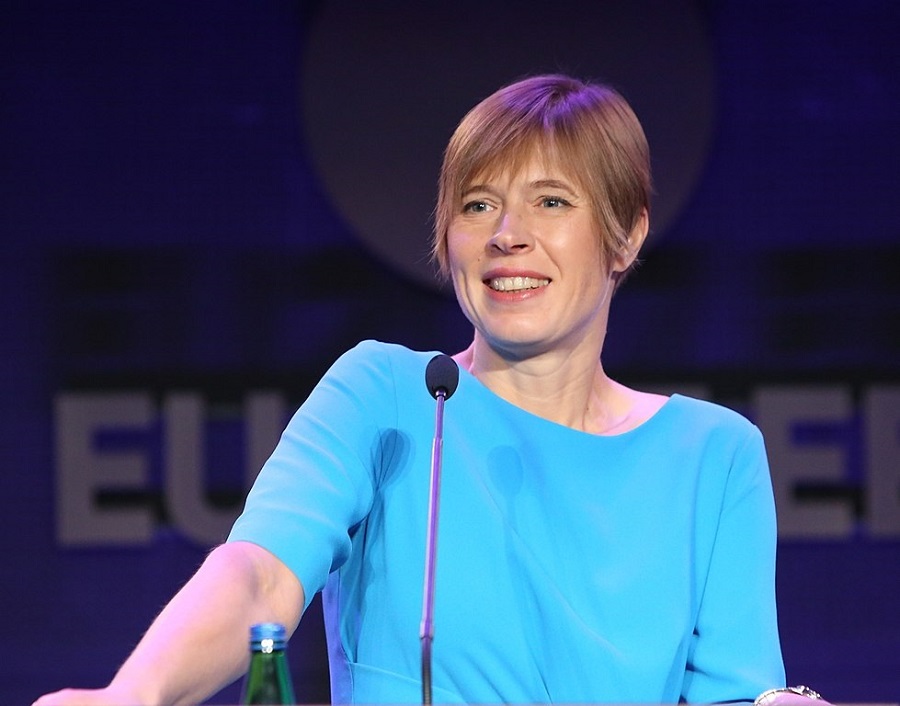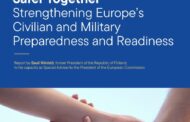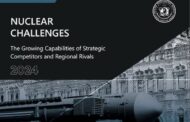Keynote speech by the President of Estonia at MSC side event
“NATO’s Challenges on the Eastern Flank: Enhancing Forward Presence and Maintaining Cohesion“
15.02.2018
____________________________________________________________________________________________________________________________________
Dear Ambassador Ischinger, Minister Schmidt, Admiral Nielson,
Ladies and gentlemen
First of all I would like to thank the German Atlantic Association and the Munich Security Conference for organizing this side-event. As Estonia is one of the four host nations of the eFP Battle Groups, I would like to use this opportunity to give an overview on what has been done during the last one and a half years since the Warsaw Summit, and what should be done further. And finally also a couple of thoughts on what we should NOT do in regards to eFP and the cohesion of NATO as a whole.
What has been done
Although the creation and deployment of eFP-s was primarily triggered by the 2014 events in Crimea and Eastern Ukraine, for Estonia the aim of getting Allied military presence on our soil goes back much further. Against the background of the constant negative tendencies in European security, gaining NATO membership in 2004, becoming part of the collective security space, was a huge and positive development for the Baltic Sea region. But it was certainly not „the end of history“ for us. We understood already back then that in order to have fully credible collective defense, one needs also to work on interoperability, realistic contingency planning and military presence by other Allied countries.
Looking towards the East, we see a steady military build-up and modernization of the Russian Armed Forces that started already some 10 years ago. Originally, this was explained as a matter of a long-postponed defence reform. More recently, it has been called a reaction to the small Allied contingents deployed in the Baltics. Whatever the reason for the build-up, it is a fact that today the permanent size of the troop contingent in Western Russia is equal to the level that in 2009 was only attained for a short period of time during the exercise ZAPAD 2009. This, unfortunately, is the new normality for us.
Before 2014 the only permanent military presence in the Baltic States was a small Air Policing detachment to Lithuania. NATO reacted quickly and seriously to the post-Crimea situation, because the occupation of Crimea obviously changed the risk assessment. It’s not only the decision to create the eFP in the summer of 2016 and deploy the battle groups already in spring of 2017, which by NATO’s standards is very fast pace. We also had the first US fighter planes in Estonia in March 2014, only a couple of days after the request was forwarded. These were followed about a month later by enhanced Baltic Air Policing mission to Estonia and US Army contingents in all three Baltic states and Poland. Of course, at the same time, diplomatic efforts were undertaken to make sure there can be no misreading of the western alliance’s willingness to protect each and every NATO Member. President Obama visited Tallinn in September 2014, to tell that Tallinn, Riga and Vilnius are just as important as the defence of Berlin and Paris and London. It was a coherent chain of action, responding to the rapid need to prop up deterrence capability.
All those steps demonstrated not only to our adversaries, but also to our home audiences, that when it comes down to real security challenges, NATO can still make quick, bold and effective decisions. 100% track record of successful deterrence has serious grounds in NATO’s modus operandi.
When we come to the deployment phase of the Battle Groups, the main challenge wasn’t of military or logistical kind. It is a success story by all accounts. But what was disturbing during the year after the Warsaw Summit, was the weird worry that the risk to NATO via the Baltic States might actually increase with the eFP deployment. I think that most of you have seen the headlines: „Is Estonia next?“, „Baltic States getting ready for an all-out war“, „Heightened tensions as NATO deploys to Russian border“ etc. I would be happy if I could reduce this to the currently common media antics of exaggeration, but you could also hear it in some Western capitals. I wish to make it very clear – of course it is in the Russian interests that Western allies would see it this way. Of course they did and will continue to make sure that as many people as possible would see their side of the story. But it’s for us to know better.
Russia respects action and decisiveness, clear boundaries. It is very important to note that the worries of some did not materialize – the relations with Russia didn’t deteriorate any further because Allied troops were deployed to the Baltic States and Poland. Quite to the contrary – currently we can observe that its aggressive posture in the region has been contained. The eFP Battle Groups have had a stabilizing and deterring impact on the security situation of the Baltic region. Just as Allied military contingents in Western Germany had a stabilizing and deterring effect during the 40 years of the Cold War.
The next challenge for us on communication front, by the way, is to explain to the general public that these are not NATO troops defending Estonia, Latvia, Lithuania and Poland, but this is NATO protecting itself. And that that there wasn’t and isn’t a huge military vacuum in the Baltic states without the Allied contingents. Estonia has already for many years – and Latvia and Lithuania are reaching this level in 2018 – spent at least 2% of its GDP on military defence. We have created a reserve force of over 20 000 reservists with a real – and tested – capability to mobilize is on a 24 hour notice. So, in this sense we are truly grateful to all our allies participating in eFP, but we feel sad if this is presented as NATO supporting helpless, burdensome eastern flank. The reality is that the eFP creates a tripwire with strategic value, but in purely numerical terms the eFP Battle Group is just another infantry battalion in addition to the tens that Estonia is able to field itself. We are an outpost, benefitting the whole alliance.
When we come down to the tactical and technical level, then the first 10 months of the UK-led Battle Group’s activities in Estonia have been successful. The Battle Group is well integrated to the Estonian Defence Forces command structure, operational planning and annual training cycle, although interaction of a permanent full strength mechanized battalion tactical group is certainly a challenge for our small peace-time army. The Allied troops in Estonia tend to admit that their living and training facilities in Estonia are of a better quality than those they had back home. This is, among other things, due to Estonia investing another 0,2% of GDP on top of our regular defence budget for host nation support.
Already from the first year of exercising together in different eFP battle groups, NATO has learned a lot about its capacity to really, actually, act in an integrated manner with the troops coming from different armed forces, in the difficult terrain and climate conditions unfamiliar to most allies. There are lessons to be learned, especially when it comes to, for example, communication systems or using heavy equipment in forested or swampy areas. I wouldn’t call these issues ‚challenges‘, but rather an excellent opportunity to exercise collective defence in a realistic environment and using these lessons to further enhance NATO’s collective defence capability. And rotating the units in and out of the host nations in a 6-month interval means that you have approximately 8000 Allied soldiers who each year get a firsthand account of the terrain, climate and armed forces of the region they would have to defend if our deterrence should fail.
Ladies and gentlemen, the eFP is a success. But deterrence is not finished. So, what is to be done that our capacity to deter would continue to be credible?
We must finish what we agreed upon in Warsaw, meaning that the Battle Groups must have joint enablers. Which in practical terms means a solution to beef up air, maritime, air defence or indirect fire capability of the eFP. This is vital not just for the eFP-s, but to the whole Area of Operations. The tactical, technical and logistical lessons we have identified so far, must be integrated to everyday planning and training.
Going to a higher, more strategic level – for deterrence to work we need both our own, national military capabilities as well as the eFP-s. But probably nobody would think that these would be enough to effectively defend the Baltics in case deterrence should fail. Therefore, for deterrence to remain credible, we need a realistic reinforcement strategy that would, among other things, assure the adversary that an aggressive move will be swiftly responded by sending additional troops and capabilities to the region. It is demonstrating Allied solidarity and willingness to react by a swift Allied response should something touch the tripwire.
How to achieve that this scenario would be credible? For that, three steps are necessary.
First of all, NATO, must be ready and trained to make these decisions swiftly. It has to be ready and exercised both at the political and military level.
Secondly, there must be enough units in high readiness in hand to be deployed in order to de-escalate a crises and avoid a large-scale aggression. If that fails, there must be also a follow on capacity of larger scale, of defined nature and defined abilities, able to co-operate as soon as it is assembled. If we fail to do that, we would face devastating consequences not only to the men involved and the populations of the territories under attack, but also to the security and morale of our publics.
And thirdly, Russia has the ability to seriously hinder Allied reinforcement with its Anti Access/Area Denial capabilities. The Alliance must be able be prepared for this and have the necessesary capabilities to reinforce despite it. There must be realistic planning, exercises and mechanisms in place on how to move these troops across Europe and the Atlantic and insert them to the Baltic Sea region, even if this must take place through the so-called A2/AD bubble. This is equally important alongside having the necessary troops in place. Because only realistic planning and excercising these plans often show what are the real gaps in capabilities or in the troop numbers drawn on paper.
Estonia hopes that these issues will be discussed and provided for in the forthcoming Summit in Brussels, and we especially see a need for a strong guidance how the Alliance will continue developing the reinforcement strategy. Taking these steps is the best way to further strengthen NATO’s deterrence and defence posture across the Eastern flank – but not only the eastern flank. Having necessary command and control systems, plans and troops is the best way to ensure that we will never have to use them to shoot in anger. And having them for one region makes NATO stronger – and fighting in its armed forces safer – 360 degrees.
Ladies and gentlemen,
Although the challenges rising from Russia might seem like the most urgent issues for the countries on NATO’s Eastern Flank, the developments of the last couple of years have given the impetus for NATO to refocus on the collective defence of its territory. This is a general good, much wider than protection of the Eastern Flank.
Of course, while we greet the renewed focus on NATO’s core task, we must not forget that there are also other, equally important challenges facing the Alliance. For understandable reasons it is terrorism and extremism, instability, uncontrollable migration coming from the Mediterranean that keep the decision-makers and common people up at night.
Estonia, as also the other Baltic countries understand this very well and therefore we are all increasing our contributions to the crisis management operations – all of which are in one or the other way connected with the abovementioned threats. NATO has three core tasks and Estonia is committed to fulfilling all of them. We welcome the creation of the regional Hub for the South in Naples. Because this Hub, among many other things, would facilitate that an analysis of the risks faced over there would come to decision-makers such as myself, as naturally and easily as I can analyse and explain the East. Similarly, I will continue personally to maintain deep contacts with my own southern colleagues, in order to maintain a common and comprehensive analysis of various challenges surrounding us among the highest level of decision-makers.
And since I already turned away from military and to political discussion, let me continue a bit on that, albeit on the issue I know best:
NATO’s policy towards Russia. Is it relevant? Should it be reviewed?
There are lot of misperceptions out there. Some created by ourselves because we seem to be stuck in the past.
I noticed when going through the program of the MSC that there is a session called „Dialogue and Deterrence; Europe, Russia and the future of the Harmel Doctrine“. I’m sure I don’t need to remind anyone in this audience the context when (Belgian Minister) Pierre Harmel wrote the report in 1967. Moreover, it is a report. Not a doctrine. And it spoke of dual track policy – deterrence and détente. Of maintaining adequate defence while promoting political détente. It included a plea for balanced force reductions in the East and West. That was back in 1967 at the height of the Cold War. 51 years later, some Allies are still looking the Harmel report as solution to challenges of post-Cold War times.
Of course, the policies as set out in the Harmel report worked well for the times they were designed for. But is it still the solution for the challenges we have been facing since August 2008 and winter 2014 when Russia caused the biggest geopolitical landslides in Europe after the end of Second World War? Do we really want to use the policies of the past to tackle the present and the future? And if we were to stick to the principles of the Harmel report in its integrity, not doing any cherry picking, then clearly NATO’s current Eastern flank with eFP is not enough for credible deterrence.
But our policy vis-a-vis Russia has been collectively reviewed in Wales and Warsaw and we should stick to it. We must not forget that it speaks of deterrence, defense and dialogue. There are two parallel tracks – deterrence and defence on the one side and dialogue on the other. One cannot be the hostage of another. If Russians would know that the enhancement of our defense and deterrence posture depends on how many NATO-Russia Councils there are per year and if General Gerassimov picks up the phone when SACEUR or the Chairman on NATO’s Military Committee call, then we would be in a deadlock. So we do both but not on dual track but on parallel tracks.
Dialogue is of course important. I’ve been always convinced that it makes sense to speak face to face. In the NATO context it is not a question of having or not having dialogue but on what conditions and how. From the position of strength of course. We have agreed on this. But also by being transparent, having a clear objective, being frank vis a vis the Russians and challenging them where needed.
I firmly believe that NATO’s current policy towards Russia has worked. Because we are not worse off when in 2014. Having a status quo for the past 4 years in an accomplishment.
I would argue that our steps on deterrence and defence have increased our dialogue, not diminished it, for Russia takes a strong NATO simply more seriously. But there is room for improvement. Both on deterrence and defense, and also on dialogue. Let us finish what was agreed in Wales and Warsaw on eFP and further equip it with necessary enablers for it to be credible. And let’s have plenty of political dialogue with Russia. Not only on Baltic Sea region and issues related to transparency and risk reduction at NATO’s Eastern flank, but far more broadly. NATO-Russia Council is not about eFP only. We should also discuss topics such as Syria, Middle-East, and aspects of Sahel etc., for there is not two Russias – one in the East and one in the South. And at the same time we have to continue doing NATO’s core business. It has after all worked for the last 70 years.
Thank you all for listening!
* * * * *
Zdroj: https://www.president.ee/en/official-duties/speeches/14125-keynote-speech-by-the-president-of-estonia-at-msc-side-event-natos-challenges-on-the-eastern-flank-enhancing-forward-presence-and-maintaining-cohesion/index.html
Ilustračné foto: https://commons.wikimedia.org/wiki/File:Future_of_Work-_Making_It_e-Easy_(37202211355)_(cropped).jpg







